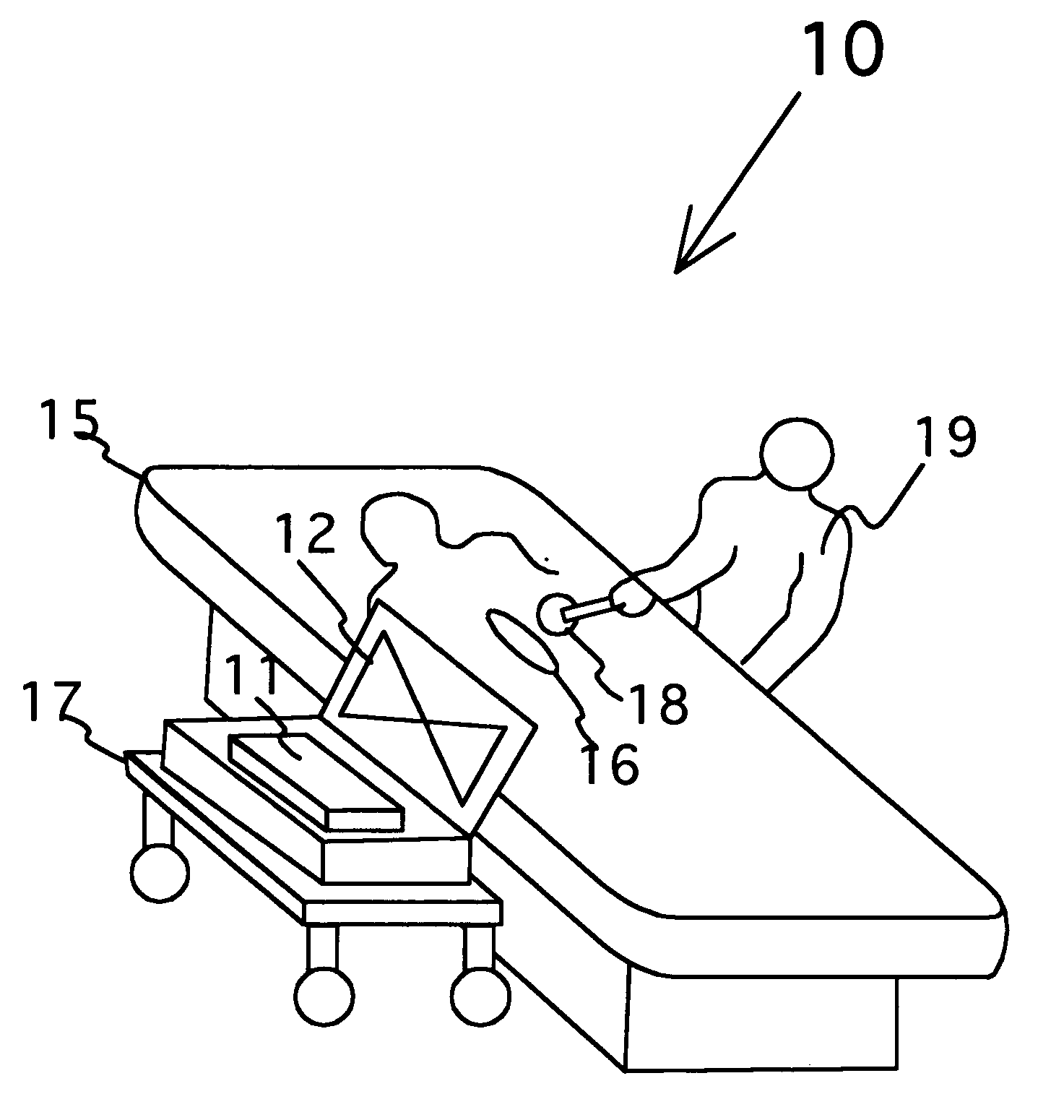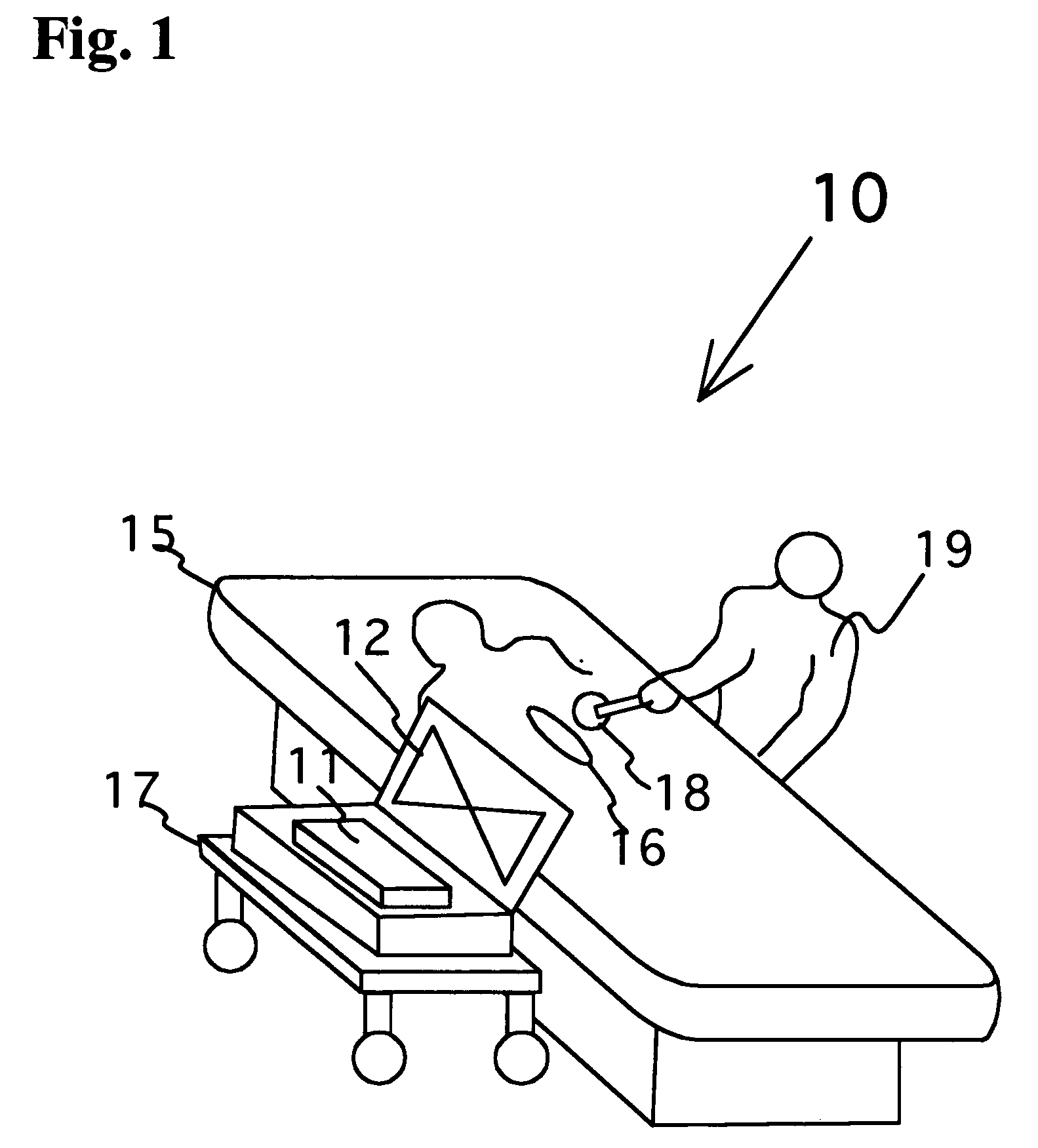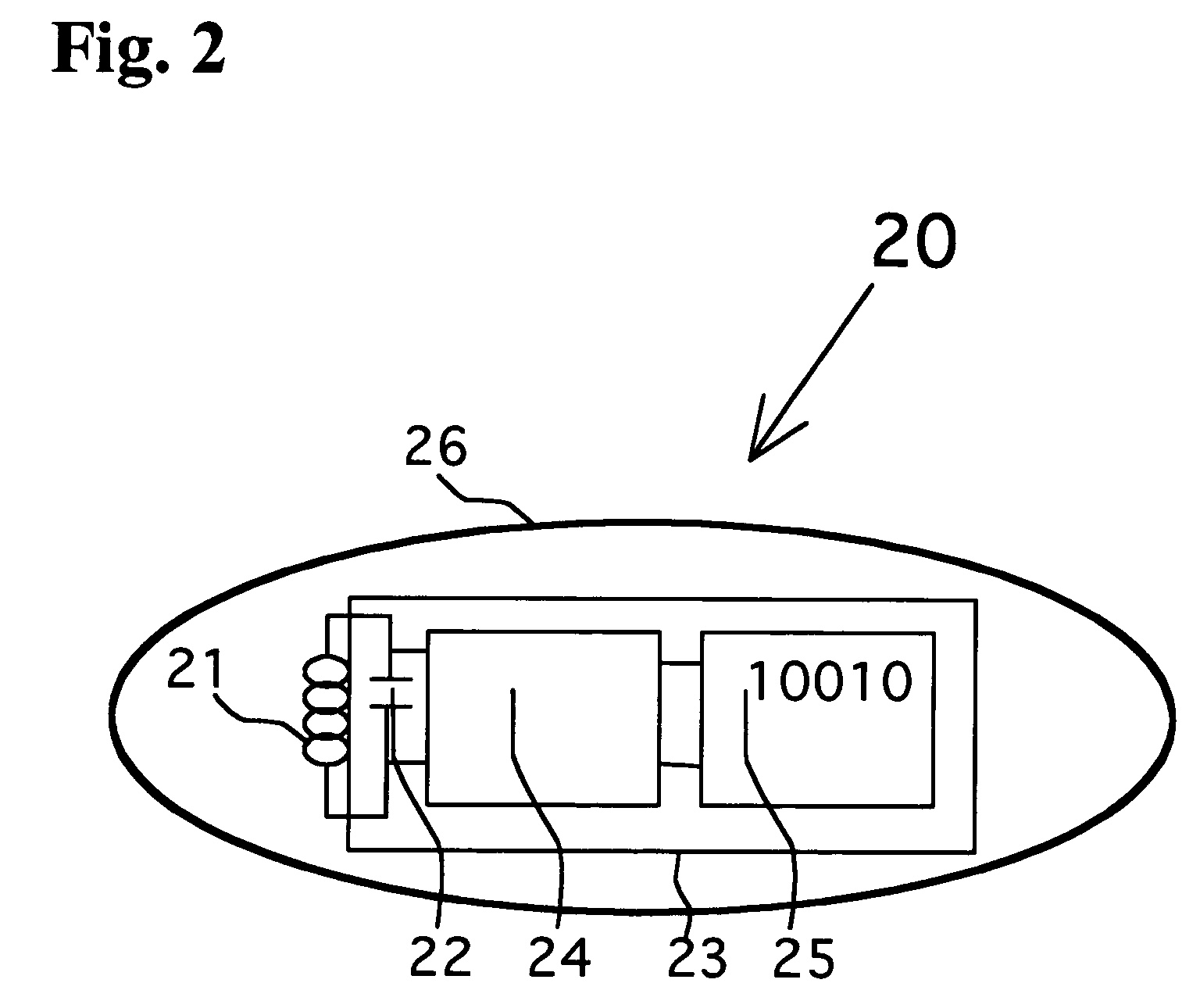Surgical implement detector utilizing a radio-frequency identification marker
a radio-frequency identification and detector technology, applied in the field of radio-frequency identification markers for the detection of surgical implements, can solve the problems of limited radio-frequency functionality, large size of tags, and difficult to detect surgical implements, and achieve the effect of increasing the bandwidth availabl
- Summary
- Abstract
- Description
- Claims
- Application Information
AI Technical Summary
Benefits of technology
Problems solved by technology
Method used
Image
Examples
Embodiment Construction
[0041] This invention relates to a surgical implement detector utilizing a radio-frequency identification marker which is embedded in a surgical sponge or laparotomy pad and is detected by a remote hand-held scanner or a fixed scanner. The scanner may be used to locate the so marked laparotomy pads or surgical sponges any time during surgery. More specifically, it is used to determine whether any foreign objects are left behind in a surgical cavity prior to surgical wound closure. The radio-frequency identification marker is an integrated circuit with a burned-in digital code in a read-only memory. It is powered by a capacitor circuit that is connected to an antenna, which comprises a ferrite element wound with copper wire. When the radio-frequency identification marker is in the presence of electromagnetic radiation, the antenna couples with the interrogating electromagnetic radiation, charges the capacitor and powers the integrated circuit, which accesses the burned-in digital cod...
PUM
 Login to View More
Login to View More Abstract
Description
Claims
Application Information
 Login to View More
Login to View More - R&D
- Intellectual Property
- Life Sciences
- Materials
- Tech Scout
- Unparalleled Data Quality
- Higher Quality Content
- 60% Fewer Hallucinations
Browse by: Latest US Patents, China's latest patents, Technical Efficacy Thesaurus, Application Domain, Technology Topic, Popular Technical Reports.
© 2025 PatSnap. All rights reserved.Legal|Privacy policy|Modern Slavery Act Transparency Statement|Sitemap|About US| Contact US: help@patsnap.com



